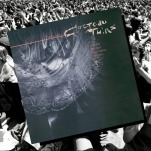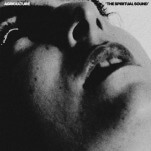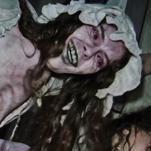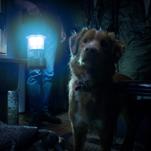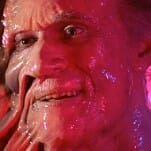The 40 Best Movies on Tubi (September 2025)
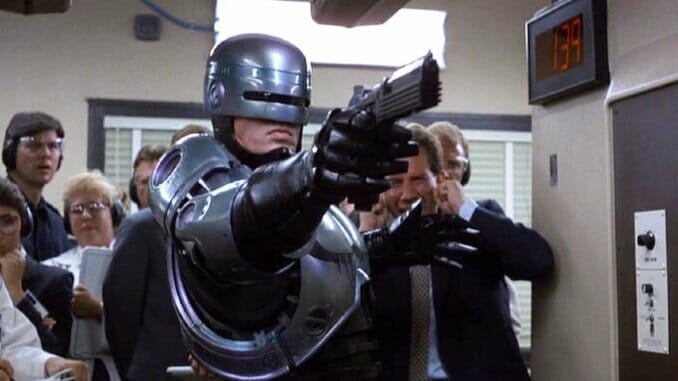
As a free, ad-supported streaming service, finding the best movies on Tubi involves one major pro and one major con: Pure scale. Their library is massive, with close to 1,000 films available just in the horror genre, but the functionality and ability to browse those films in a logical way leaves much to be desired. It’s a library that eclipses other streamers, and one supplemented by questionable Tubi Originals like Titanic 666, but despite its difficult learning curve, the sheer selection of movies at hand has helped make Tubi into a surprising go-to for a select kind of cinephile. Looking for an obscure title, or a well-loved movie from decades ago that simply doesn’t appear on one of the major streamers? Check Tubi. A perfect mirror image to Criterion’s well-curated ensemble, Tubi’s shotgun blast of cinema has its merits. And it’s why our list of what’s available is so important.
Here are the 40 best movies on Tubi:
1. Midnight Cowboy
Year: 1969
Director: John Schlesinger
Stars: Jon Voight, Dustin Hoffman, Brenda Vaccaro, John McGiver, Ruth White, Sylvia Miles, Barnard Hughes
Rating: R
In this film by British director John Schlesinger, Jon Voight plays a Texan with a troubled past who comes to the big city trying to make a career as a gigolo. Enter his pal, Ratso Rizzo, played by the great and grating Dustin Hoffman. Midnight Cowboy was rated X upon release for homosexual content that would hardly raise an eyebrow today, and remains the only film of that category to ever win an Oscar, much less the Best Picture award it captured in 1970. (The only other X-rated film to be nominated was Kubrick’s A Clockwork Orange.) Second on the list of the decade’s greatest actors is Dustin Hoffman. Along with Midnight Cowboy, he starred in the seminal The Graduate, the western epic Little Big Man, Sam Peckinpah’s terrifying classic Straw Dogs, the controversial Lenny (a hopeless Best Picture nominee in the 1974 class with The Conversation and The Godfather, Part II), All the President’s Men, Marathon Man and Kramer vs. Kramer. But his incredible turn as Ratso Rizzo is still the greatest performance of his career, and the chemistry between him and his physical opposite is one of the best and most unusual friend dynamics in film history, hilarious and ultimately heartbreaking. —Shane Ryan
2. Stalag 17
Year: 1953
Director: Billy Wilder
Stars: William Holden, Don Taylor, Otto Preminger
Rating: NR
Tonally, Billy Wilder’s prisoners of war story is a true dramedy, fitting into an odd post-war space when American cinemagoers were apparently content to laugh at the horrors faced by prisoners, even while being reminded of the deadly results of incarceration, which were obviously even more dire for victims of the Holocaust. It’s William Holden who makes the film click and hum, portraying American airman Sefton as a somewhat sleazy but clever profiteer who figures that if he’s going to spend time in a POW camp, he might as well be an enterprising big shot while he’s there, living as comfortably as he can. In comparison with a film like The Great Escape, which would later come along and tell a story ringing with many of the same tropes, albeit without the screwball sense of humor, Stalag 17 is both an escape story and a light mystery, centered around the identity of the German informant who is sabotaging each attempt by the Americans to flee the camp and defy the Germans. With a cast of colorful characters and good-natured humor, Stalag 17 somehow takes a horrific premise and mines it for laughs more successfully than one would have thought possible. —Jim Vorel
3. Mississippi Burning
Year: 1988
Director: Alan Parker
Stars: Gene Hackman, Willem Dafoe, Frances McDormand, Brad Dourif
Rating: R
Based loosely on the real-life killings of three Civil Rights workers in 1964 Mississippi, this 1988 Best Picture nominee follows two FBI agents played by Gene Hackman and Willem Dafoe as they attempt to investigate the murders while navigating the hotbed of racism and violence that is 1960s Mississippi. Though not exactly nuanced in the way it portrays a Civil Rights-era South (the bad guys veer dangerously close to cartoonish at times), the film is an exquisitely made, emotionally brutal thriller with phenomenal (and Oscar-nominated) performances from Hackman and Frances McDormand. Featuring no shortage of incendiary visuals to match its explosive content, Mississippi Burning is a powerful piece of American filmmaking. —Mark Rozeman
4. The Changeling
Year: 1980
Director: Peter Medak
Stars: George C. Scott, Trish Van Devere, Melvyn Douglas, John Colicos
Rating: R
George C. Scott tempers his natural irascibility to play a melancholy composer grieving for his recently deceased wife and daughter in Peter Medak’s conflation of haunted house movie and supernatural whodunit. Dubbed one of the scariest movies of all time by Martin Scorsese, The Changeling deals the terror out in spades, with Medak playing up the tightening fear of the unknown with the precision of a horror maestro. (Indeed, it’s amazing Medak had never even been near the genre before.) Having moved into a new home, a century-old manor also occupied by the restless spirit of a young boy, Scott’s John Russell digs to discover the tale of an institutional cover-up, and of power wielded monstrously in the name of financial gain. The Changeling may be a showcase for an effortlessly magnetic veteran lead, but it’s also a mystery thriller that engrosses as it frightens. What begins as another haunted house story ends as a commentary on the history of America: a nation built not just on hard work, but also on blood and not-always-heroic sacrifice. —Brogan Morris
5. Coraline
Year: 2009
Director: Henry Selick
Stars: Dakota Fanning, Teri Hatcher, Jennifer Saunders, Dawn French, Ian McShane
Rating: PG
Director Henry Selick matches the Gothic whimsy of Nightmare Before Christmas and adds even more compelling emotional content with this adaptation of Neil Gaiman’s novella. An unhappy little girl discovers an alternate reality that seems to offer all the magic and wonder her real home lacks, only to discover the sinister implications behind the candy-colored exteriors. Gaiman’s inventive approach to fairy-tale rules matches Selick’s luminescent colors and blend of everyday emotions and dream-like wonders. Perhaps the greatest stop-motion film ever, it even looks great in 3D. —Curt Holman
6. Day of the Dead
Year: 1985
Director: George A. Romero
Starring: Lordi Cardille, Terry Alexander, Joe Pilato, Richard Liberty
Rating: R
Although Dawn will probably always have more esteem, and is significantly more culturally important, Day of the Dead is my personal favorite of George Romero’s zombie films, and I don’t think it ever quite gets the respect it deserves. It comes along at a sort of sweet spot—bigger budget, more ambitious ideas and Tom Savini at the zenith of his powers as a practical effects artist. The human characters this time are scientists and military living in an underground bunker, which for the first time in the series gives us a wider view of what’s been going on since the dead rose. This film reintroduces the science back into zombie flicks, finally making one of the main characters a researcher (Matthew “Frankenstein” Logan) who has had some time to study the zombies in the relative safety of a lab. As such, the movie redefines the attributes of the classic Romero ghoul—they’re dumb, but not entirely unintelligent, and some of them can even be trained to use tools and possibly remember certain aspects of their previous lives. That of course brings us to “Bub,” maybe the single most iconic zombie in Romero’s oeuvre, who displays a unique level of personality and even humor. Day of the Dead ultimately takes a monster that audiences thought they knew pretty well at this point and suggests that perhaps they were only just scratching the surface of zombies’ potential. —Jim Vorel
7. The Apartment
Year: 1960
Director: Billy Wilder
Stars: Jack Lemmon, Shirley MacLaine, Fred MacMurray
Rating: NR
Filmmaker Billy Wilder had perhaps one of the greatest, most diverse track records in film history from 1944 to 1960. In this period, he tackled an Oscar-winning drama about alcoholism (The Lost Weekend), two well-regarded film noirs (Double Indemnity, Sunset Boulevard), a war drama (Stalag 17), two light-hearted rom-coms (Sabrina, Seven Year Itch) a gripping murder-mystery (Witness for the Prosecution) and perhaps the funniest American movie of all time (Some Like It Hot). Yet, of all these golden credits, one Wilder’s most beloved and memorable achievements was 1960’s The Apartment. Jack Lemmon plays C.C. Baxter, an ambitious office worker who, desperate to climb the corporate ladder, allows his bosses to use his apartment to carry on discreet affairs with their mistresses. Things get complicated, however, when he discovers that his office crush, quirky elevator operator Fran Kubelik (Shirley MacLaine), is one of his bosses’ mistresses. While it actually gets quite dark at times, The Apartment strikes a perfect balance between laugh-out-loud comedy and emotionally honest drama. Following the career highlight that was his drag-heavy performance in Some Like It Hot, Lemmon here proves that he can play the low-key, straight man with equal dexterity. Likewise, MacLaine’s charming portrayal as the damaged, yet lovable Kubelik would provide the model for manic pixie dream girls for years to come. —Mark Rozeman
8. RoboCop
Year: 1987
Director: Paul Verhoeven
Stars: Peter Weller, Nancy Allen, Ronny Cox
Rating: R
Throughout the late-1970s and indulgent ’80s, “industry” went pejorative and Corporate America bleached white all but the most functional of blue collars. Broadly speaking, of course: Manufacturing was booming, but the homegrown “Big Three” automobile companies in Detroit—facing astronomical gas prices via the growth of OPEC, as well as increasing foreign competition and the decentralization of their labor force—resorted to drastic cost-cutting measures, investing in automation (which of course put thousands of people out of work, closing a number of plants) and moving facilities to “low-wage” countries (further decimating all hope for a secure assembly line job in the area). The impact of such a massive tectonic shift in the very foundation of the auto industry pushed aftershocks felt, of course, throughout the Rust Belt and the Midwest—but for Detroit, whose essence seemed composed almost wholly of exhaust fumes, the change left the city in an ever-present state of decay. And so, though it was filmed in Pittsburgh and around Texas, Detroit is the only logical city for a Robocop to inhabit. A practically peerless, putrid, brash concoction of social consciousness, ultra-violence and existential curiosity, Paul Verhoeven’s first Hollywood feature made its tenor clear: A new industrial revolution must take place not within the ranks of the unions or inside board rooms, but within the self. By 1987, much of the city was already in complete disarray, the closing of Michigan Central Station—and the admission that Detroit was no longer a vital hub of commerce—barely a year away, but its role as poster child for the Downfall of Western Civilization had yet to gain any real traction. Verhoeven screamed this notion alive. He made Detroit’s decay tactile, visceral and immeasurably loud, limning it in ideas about the limits of human identity and the hilarity of consumer culture. As Verhoeven passed a Christ-like cyborg—a true melding of man and savior—through the crumbling post-apocalyptic fringes of a part of the world that once held so much prosperity and hope, he wasn’t pointing to the hellscape of future Detroit as the battlefield over which the working class will fight against the greedy 1%, but instead to the robot cop, to Murphy (Peter Weller), as the battlefield unto himself. How can any of us save a place like Detroit? In Robocop, it’s a deeply personal matter. —Dom Sinacola
9. The Death of Stalin
Year: 2017
Director: Armando Iannucci
Stars: Steve Buscemi, Simon Russell Beale, Paddy Considine, Rupert Friend, Jason Isaacs, Michael Palin, Andrea Riseborough, Jeffrey Tambor
Rating: R
You can trace that dynamic from The Thick of It, through In the Loop and Veep, and then especially in his new film, The Death of Stalin, whose subject matter can be inferred from a mere glance. The Death of Stalin marks a major temporal departure for Iannucci, known for skewering contemporary political embarrassments and turmoil, by taking us back to 1953 Russia. Years out from the Great Purge, the country remains in the grip of widespread fear fomented by nationalism, public trials, antisemitism, executions, mass deportations and civic uncertainty. Iannucci asks us to laugh at an era not known for being especially funny. That’s the give and take at the film’s core: Iannucci drops a punchline and we guffaw, then moments later we hear a gunshot, accompanied by the sound of a fresh corpse hitting the ground. Finding humor in political violence is a big ask, and yet Iannucci’s dialogue is nimble but unfailingly harsh, replete with chafing castigations. We howl with laughter, though we can’t help feeling bad for every poor bastard caught on the receiving end of trademark Iannucci verbal abuse, which typically means we end up feeling bad for every character in his films. He spares no one from insult or injury, even when they’re lying dead on the floor, soaked in their own piss. A tale of mortal sins as well as venial ones, The Death of Stalin adds modern urgency to his comic storytelling trademarks: As nationalist sentiment rears its ugly head across the globe and macho authoritarian leaders contrive to hoard power at democracy’s expense, a farcical play on the political clusterfuck that followed Stalin’s passing feels shockingly apropos. It takes a deft hand and a rare talent to make tyranny and state sanctioned torture so funny. —Andy Crump
10. Bringing Up Baby
Year: 1938
Director: Howard Hawks
Stars: Katharine Hepburn, Cary Grant, Charles Ruggles, Barry Fitzgerald, May Robson, Walter Catlett, Fritz Feld
Rating: NR
The textbook example of a screwball comedy, Bringing Up Baby finds Cary Grant’s hilariously uptight paleontologist Dr. David Huxley struggling to keep his life together when the flirtatious agent of chaos that is Katherine Hepburn’s Susan Vance comes crashing into his life. Add in shenanigans involving a baby leopard, a collapsing brontosaurus skeleton and some deftly executed pre-MPAA sexual innuendos and you have not only one of the best romantic comedies of all time but one of the funniest American movies ever made. —Mark Rozeman
11. Stranger Than Fiction
Year: 2006
Director: Marc Forster
Stars: Will Ferrell, Maggie Gyllenhaal, Dustin Hoffman, Queen Latifah, Emma Thompson
Rating: PG-13
Stranger Than Fiction is the film that should have represented Will Ferrell’s big dramatic break, a sadly underseen and sweetly winning tale of modern fantasy, about a sadsack IRS agent who wakes up one morning to find himself having been thrust overnight into a literary quandary: He suddenly seems to be the main character of a novel, and he can hear the author’s narration in his head, warning him of an impending and tragic death. That knowledge of his upcoming demise serves as an impetus for poor Harold Crick (Ferrell) to start really living his life for the first time ever, embracing the messiness of human experience, romance and sacrifice, even as he attempts to track down the source of the authorial voice (Emma Thompson, neurotic to the max) and kindly ask if she’d reconsider killing him. It’s all somewhat shmaltzy, but you can’t help but be won over by Ferrell’s warmth and plainspoken decency as Harold, and Dustin Hoffman is particularly good as a wry literature professor who takes a grudging interest in Harold’s case, helping him attempt to decode what kind of story he might be in. Stranger Than Fiction steers itself in a surprisingly profound direction as it ponders the intersection of fate and responsibility, both for those who understand the consequences of their action or inaction, and the creators whose work grows beyond their ability to control. —Jim Vorel
12. Carnival of Souls
Year: 1962
Director: Herk Harvey
Stars: Candace Hilligoss, Sidney Berger
Rating: PG
Carnival of Souls is a film in the vein of Night of the Hunter: artistically ambitious, from a first-time director, but largely overlooked in its initial release until its rediscovery years later. Granted, it’s not the masterpiece of Night of the Hunter, but it’s a chilling, effective, impressive little story of ghouls, guilt and restless spirits. The story follows a woman (Candace Hilligoss) on the run from her past who is haunted by visions of a pale-faced man, beautifully shot (and played) by director Herk Harvey. As she seemingly begins to fade in and out of existence, the nature of her reality itself is questioned. Carnival of Souls is vintage psychological horror on a miniscule budget, and has since been cited as an influence in the fever dream visions of directors such as David Lynch. To me, it’s always felt something like a movie-length episode of The Twilight Zone, and I mean that in the most complimentary way I can. Rod Serling would no doubt have been a fan. —Jim Vorel
13. The Great Escape
Year: 1963
Director: John Sturges
Stars: Steve McQueen, James Garner, Richard Attenborough
Rating: R
The nonfiction, real-life mass escape from a Nazi detention camp in Poland was presumably nowhere near as charismatic as John Sturges’ awesomely cast film adaptation, but that’s okay. The film doesn’t bring anything especially new to the cinematic examination of the war. That’s okay. It’s escapism? Well, it’s about escaping. What makes this film a high-stamina classic is largely its amazing ensemble cast, which includes Steve McQueen, Richard Attenborough, Charles Bronson, James Garner, James Coburn and Donald Pleasance. This band of POWs work together as a film ensemble as well as they work together to execute their impossible escape-each character bringing a different skill set and a different viewpoint to an effort that can only succeed if they all accept their differences and work together. The film has a rather slow start, which some people feel is a weakness, although it’s arguably valid for the character development and relationship development that are key to our desire to see these guys succeed. Despite its laconic pacing in the first half (which one could argue is a thematic underscoring of the frustrating and frightening suspension of being a POW, only diffused and channeled into action when they see a potential path to freedom), it remains a masterpiece of the action genre. It was also the film that put Steve McQueen on the map. I’m sure uncountable numbers of young men walked out of the cinema determined to buy a motorcycle after watching McQueen’s iconic escape ride. They don’t all make it, but they sure make you feel invested in their plan. —Amy Glynn
14. His Girl Friday
Year: 1940
Director: Howard Hawks
Stars: Rosalind Russell, Cary Grant, Ralph Bellamy
Rating: NR
Special effects have become so sophisticated that many of us have probably forgotten how much pure amazement you can wreak with a great story and a script that doesn’t let up for one second. This amazing, dizzyingly paced screwball comedy by Howard Hawks stars Cary Grant and Rosalind Russell, and takes us back into two of the decade’s hallmark preoccupations: The “remarriage comedy” and the intrigue and obsessiveness of the newspaper world. The minute Russell’s Lindy Johnson stalks into the newspaper office run by her ex-husband Walter Burns (Grant), you know it’s to tell him she’s getting remarried and leaving journalism to raise a family, and you know that’s not how it’s going to end. No high-suspense mystery here. What puts you on the edge of your seat in this film is how you get there. Hilariously acted and expertly filmed, His Girl Friday derives much of its comedic impact from the incredibly clever and lightning-fast banter of the characters. Don’t even think about checking your phone while you’re watching this. In fact, try to blink as little as possible. —Amy Glynn
15. Memento
Year: 2000
Director: Christopher Nolan
Stars: Guy Pearce, Joe Pantoliano, Carrie-Anne Moss
Rating: R
During a brutal attack in which he believes his wife was raped and murdered, insurance-fraud investigator Leonard Shelby (played with unequivocal intensity, frustration and panic by Guy Pearce) suffers head trauma so severe it leads to his inability to retain new memories for more than a few minutes. This device allows Nolan to brilliantly deconstruct traditional cinematic storytelling, toggling between chronological black-and-white vignettes and full-color five-minute segments that unfold in reverse order while Pearce frantically searches for his wife’s killer. The film is jarring, inventive and adventurous, and the payoff is every bit worth the mind-bending descent into madness. —Steve LaBate
16. Monty Python’s Life of Brian
Year: 1979
Director: Terry Jones
Stars: Graham Chapman, John Cleese, Terry Gilliam, Eric Idle, Terry Jones, Michael Palin
Rating: R
Pretty much made on George Harrison’s dime and considered, even if apocryphally, by the legendary comedy troupe to be their best film (probably because it’s the closest they’ve come to a three-act narrative with obvious “thematic concerns”), Life of Brian got banned by a lot of countries at the butt-end of the ’70s. As a Christ story, the telling of how squealy mama’s boy Brian (Graham Chapman) mistakenly finds himself as one of many messiah figures rising in Judea under the shadow of Roman occupation (around 33 AD, on a Saturday afternoon-ish), Monty Python’s follow-up to Holy Grail may be the most political film of its ilk. As such, the British group stripped all romanticism and nobility from the story’s bones, lampooning everything from radical revolutionaries to religious institutions to government bureaucracy while never stooping to pick on the figure of Jesus or his empathetic teachings. Of course, Life of Brian isn’t the first film about Jesus (or: Jesus adjacent) to focus on the human side of the so-called savior—Martin Scorsese’s take popularly did so less than a decade later—but it feels like the first to leverage human weakness against the absurdity of the Divine’s expectations. Steeped in satire fixing on everything from Spartacus to Franco Zeffirelli’s Jesus of Nazareth, and buttressed by as many iconic lines as there are crucifixes holding up the film’s frames (as Brian’s equally squealy mother hollers to the swarming masses, “He’s not the messiah. He’s a very naughty boy!”), the film explores Jesus’s life by obsessing over the context around it. Maybe a “virgin birth” was really just called that to cover up a Roman centurion’s sexual crimes. Maybe coincidence (and also class struggle) is reality’s only guiding force. Maybe the standard of what makes a miracle should be a little higher. And maybe the one true through line of history is that stupid people will always follow stupid people, whistling all the way to our meaningless, futile deaths. —Dom Sinacola
17. Watcher
Year: 2022
Director: Chloe Okuno
Stars: Maika Monroe, Karl Glusman, Burn Gorman
Rating: R
Maika Monroe knows better than almost any actor working today how to turn her head or widen her eyes in mounting horror. The control she has over her body, the ability she has to convey realistic fear and her 2014 double-header of The Guest and It Follows made her an instant household name for genre fans. Perhaps one of those was director Chloe Okuno, who knows exactly what to do with her star in her paranoid debut feature (which follows her “V/H/S/94“:https://www.pastemagazine.com/movies/horror-movies/vhs-94-review-shudder-release-date-timo-tjahjanto-directors/ segment from last year), Watcher. A straightforward little B-treat, Monroe’s furtive glances out her Rear Window morph Watcher into a moody thriller elevated by its acting. Monroe plays Julia, a beautiful young housewife cooped up in an empty apartment and cooped up in an intimidating and isolating Bucharest after moving there with her husband Francis (Karl Glusman) for his work. Francis speaks Romanian. He entertains clients, makes friends, grabs drinks, chastises fresh cab drivers and translates day-to-day interactions with neighbors and landlords. Julia has none of that. No job, no friends, no real way to communicate with the world aside from her baser senses. She has her taped language lessons, which soundtrack her wistful wanderings around her lovely pale apartment and its massive window. Through that window, she sees those marking the building across the way. One of them contains a figure that also stands at the glass, looking right back. As Okuno twists the screws on the plot—Francis and Julia take a late-night stroll past police, conducting what they later learn to be a serial murder investigation—her characters unravel exactly how we want them to. Watcher flourishes as it complicates its premise beyond the unknowable and faceless desires of a shadowy silhouette. When do finally meet said suspicious neighbor (Burn Gorman), the resulting scenes are the film’s best. Monroe is fantastic alone—reacting both to intense fears and to indignation at Glusman’s fed-up patronizing—but with the always-nuanced Gorman, Watcher taps into something sharper, creepier and enjoyably ‘90s in its psychological execution.–Jacob Oller
18. Let Me In
Year: 2010
Director: Matt Reeves
Stars: Kodi Smit-McPhee, Chloe Grace Moretz, Elias Koteas, Richard Jenkins
Rating: R
Practically more supernatural a creature than its starring monster, Let Me In is not only an Americanized adaptation of a foreign film that isn’t a waste of everyone’s time, it’s arguably superior than the film it’s based upon. Like the original Swedish film, Let the Right One In, Matt Reeves’ update teases a remarkable amount of tension and intrigue through meticulous plotting and arresting imagery. Though set in Los Alamos, New Mexico, rather than Stockholm, the choice of place for relocation initially seems an odd one—but it turns out it’s not the icy Swedish darkness that harbors the sense of unease. It’s the isolation of a 12-year-old boy, neglected by parents and any real parental figure. Owen’s (Kodi Smit-McPhee) bond with the eternally youthful vampire Abby (Chloë Grace Moretz) is as effective and chilling here as it is in the original, thanks in no small part to its two phenomenal young leads. No question there’s a modern horror classic here, from the unlikeliest of origins. —Scott Wold
19. Rabid
Year: 1977
Director: David Cronenberg
Stars: Marilyn Chambers, Joe Silver, Howard Ryshpan, Patricia Gage, Frank Moore
Rating: R
Another instance where the term “vampire” is debatable, this early work from Canadian body horror maestro David Cronenberg nevertheless offers a valuable and engrossing (not to mention distinctively gross) interpretation of the typical vampire tale. Rather than emerging as some sort of mystical evil force, the vampires of Rabid are the result of a biological mutation caused when a young woman crashes her motorcycle and develops a phallic stinger under her armpit. The obtrusion subsequently develops a craving for blood, spreading a vampiric disease that turns those infected into rabid animals. Like the best horror filmmakers, Cronenberg filters this admittedly absurd premise through a personal lens, highlighting a society gone to paranoia and frenzy after the supposed “liberation” of the 1960s. And while the film is burdened by a sporadically undercooked script and the stilted acting of noted porn star Marilyn Chambers, it remains a valuable insight into the mind of a future master.—Mark Rozeman
20. A Fish Called Wanda
Year: 1988
Director: Charles Crichton
Stars: John Cleese, Jamie Lee Curtis, Kevin Kline, Michael Palin
Rating: R
This ensemble piece shows what can happen when four skilled comic actors (John Cleese, fellow Monty Python alum Michael Palin, Kevin Kline and Jamie Lee Curtis) are given a script (written by Cleese) that puts them all on equal footing. The result is a tour-de-force of crisply delivered, character-driven comedy that, while tough on old ladies, fish and terriers, continues to reward new and returning viewers. (The film also broke through the Academy’s normal bias against comedies, winning Kevin Kline a richly deserved Best Supporting Actor for his role as Otto.) —Michael Burgin
21. House on Haunted Hill
Year: 1959
Director: William Castle
Stars: Vincent Price, Carol Ohmart, Richard Long, Alan Marshal, Carolyn Craig, Elisha Cook, Julie Mitchum
Rating: NR
Every William Castle movie has its own campy charms, but House on Haunted Hill is the guy’s masterpiece. It’s got it all: Vincent Price at his goofiest, a big spooky house, a mystery and a profoundly non-frightening walking skeleton. The gimmick this time around was referred to by Castle as “Emergo,” and it amounted to a plastic skeleton on a pulley system being flown over the audience—not his most creative, but shameless enough that only Castle would stoop so low. To me, this is the quintessential 1950s horror film, even though it comes at the end of the decade. It’s totally tame by today’s standards but has some fun, over-the-top performances, a bit of witty dialog and a large helping of cheese. I can watch this thing over and over without ever getting tired of it. It’s like horror comfort food. The colorized version is even more fun, replacing the static black-and-white original with an unrealistic palette of color-coded characters you will remind you of the cast of Clue. —Jim Vorel
22. Brotherhood of the Wolf
Year: 2001
Director: Christophe Gans
Stars: Samuel Le Bihan, Vincent Cassel, Émilie Dequenne, Monica Bellucci, Jérémie Renier, Mark Dacascos
Rating: R
An utterly unique hybrid of action, period piece and quasi-werewolf horror, France’s Brotherhood of the Wolf is one of those movies that resists almost any form of classification and remains totally singular, decades later. It’s hard to believe that such a concept, especially given the vibrant and over-the-top stylized art direction, wasn’t lifted from some popular graphic novel of the ’90s. Rather, we’re pulling from history, from the real-life case of the infamous “Beast of Gévaudan,” an unknown animal responsible for a series of human slayings in the 1760s. That forms the backdrop for this fusion of martial arts and swashbuckling action, which leans on the talents of future Iron Chef icon Mark Dacascos, combined with a desperate hunt for the mysterious creature in question. Fantastical costuming and wuxia-esque action merge to push Brotherhood of the Wolf toward feverish, jaw-dropping heights. —Jim Vorel
23. We Need to Talk About Kevin
Year: 2017
Director: Lynne Ramsay
Stars: Tilda Swinton, John C. Reilly, Ezra Miller
Rating: R
A pitch-black drama from writer/director Lynne Ramsay, We Need to Talk About Kevin is a fascinating study of a sociopath, a family, and the former’s effect on the latter. While it allows Ezra Miller to showcase his alienesque abilities as a problem child, the film’s richest element is the evolving relationship between his parents (John C. Reilly and Tilda Swinton). Reilly and Swinton construct a fractured window into a marriage, with one (possibly evil) rock thrown square through it. Gripping and disturbing, Ramsay’s effort (co-written by Rory Stewart Kinnear) strikes at a vague yet central parental fear through its horrifying specificity: what happens if I screw this up? —Jacob Oller
24. The Texas Chain Saw Massacre
Year: 1974
Director: Tobe Hooper
Stars: Marilyn Burns, Paul A. Partain, Edwin Neal, Jim Siedow, Gunnar Hansen
Rating: R
One of the most brutal mainstream horror films ever released, The Texas Chain Saw Massacre, based on notorious Wisconsin serial killer Ed Gein, resembles art-house verité built on the grainy physicality of its flat Texas setting. Plus, it introduced the superlatively sinister Leatherface, the iconic chainsaw-wielding giant of a man who wears a mask made of human skin, whose freakish sadism is upstaged only by the introduction of his cannibalistic family with whom he resides in a dilapidated house in the middle of the Texas wilderness, together chowing on the meat Leatherface and his brothers harvest, while Grandpa drinks blood and fashions furniture from victims’ bones. Still, The Texas Chain Saw Massacre might not be the goriest horror film ever made, but as an imaginal excavation of the subterranean anxieties of a post-Vietnam rural American populace, it’s pretty much unparalleled. Twisted, dark and beautiful all at once, it careens through a wide variety of tones and techniques without ever losing its singular intensity. (And there are few scenes in this era of horror with more disturbing sound design than the bit where Leatherface ambushes a guy with a single dull hammer strike to the head before slamming the metal door shut behind him.) —Rachel Haas and Brent Ables
25. The Birdcage
Year: 1996
Director: Mike Nichols
Stars: Robin Williams, Gene Hackman, Nathan Lane
Rating: R
You know what’s awkward? When you’re a middle-aged gay Jewish South Beach drag club owner (Armand, played by Robin Williams) and your straight son shows up and asks for your blessing to marry his girlfriend who is the daughter of a Neocon senator (Gene Hackman) who heads something called “The Coalition for Moral Order.” You want to support your kid, but you don’t love being closeted by him, and the dinner meet-up ends up meaning you and your partner, Albert (Nathan Lane), are forced into a whole new level of drag in which you are straight, a cultural attaché to Greece, and married to the one-night stand straight-sexperiment (Katherine, played by Christine Baranski) that led to the conception of your son. Your partner’s offended, the Senator’s being investigated by the tabloids, tensions are running high and your houseboy Agador (Hank Azaria) has agreed to transform into a Greek butler named “Spartacus,” but let’s face it, tensions are running high on all sides-and that’s before your baby-mama gets caught in traffic and Albert sees the opportunity for the drag role of a lifetime. Fully Shakespearean hijinks ensue. The 1996 Mike Nichols remake of Edouard Molinaro’s La Cage Aux Folles was not really blistering social commentary, but beneath its glib feel-good star-vehicle exterior there are some depths you could easily miss while you’re distracted by the batshit-crazy and heavily sequined antics of Williams and Lane. It’s actually not only rambunctious and witty but, as with many of Robin Williams’ film roles, The Birdcage has a serious streak where a genuine investigation of personal identity is underway, and hypocrisy, acceptance, snobbery, and most of all, everyone’s individual style of “drag” (and hey, we all have one, even if we don’t always express it by putting on fake lashes and singing Sondheim) gets taken out for a much-needed exam. —Amy Glynn
26. Paths Of Glory
Year: 1998
Director: Stanley Kubrick
Stars: Kirk Douglas, Ralph Meeker, Adolphe Menjou
Rating: NR
François Truffaut is notoriously and sort of erroneously credited as having said that, “There is no such thing as an anti-war movie.” He did say that he could not make a war movie about Algiers on the basis that, “to show something is to ennoble it.” He also said that “every film about war ends up being pro-war.” If this is true then maybe Paths of Glory is the closest the movies will ever get to producing an anti-war statement, though Stanley Kubrick’s trim World War I opus is better qualified as being disdainful of war: You can sense Kubrick’s contempt for his antagonists seething from behind the camera, his righteous indignation at the unapologetic cowardice of the craven old men who send others off to die on the field of battle at their behest. Maybe Paths of Glory isn’t anti-war, but it is pro-human, a film that celebrates true dignity and honor by recognizing that one need not rush forth to meet their inevitable death to be brave.—Andy Crump
27. Searching For Sugar Man
Year: 2012
Director: Malik Bendjelloul
Rating: PG-13
“The Story of the Forgotten Genius” is such a well-worn formula for music documentaries that it was already being parodied more than three decades ago in This is Spinal Tap. In Searching for Sugar Man, as Swedish director Malik Bendjelloul begins to tell the story of Rodriguez—the Dylanesque folk rocker who released two apparently brilliant albums in the early 1970s, then disappeared—it appears he’s traveling a familiar road. But he’s got a major ace up his sleeve—that road takes a sharp left turn when we learn that bootleg recordings catapulted Rodriguez to stratospheric heights of fame in apartheid-era South Africa. (When a record-store owner is asked if Rodriguez was as big as the Rolling Stones, he replies “Oh, much bigger than that.”). In fact, his uncensored depictions of sex and drugs were so thrilling to South African musicians that he became the patron saint of the Afrikaner punk movement, which in turn laid the groundwork for the organized anti-apartheid movement that eventually brought the regime down. It’s just a shame that Rodriguez never lived to see it—he burned himself to death onstage in the middle of a show. Or overdosed in prison. Or shot himself alone in his apartment. Or… could he still be alive? Bendjelloul’s film manages to create an aura of mystery and suspense around a search that actually unfolded 14 years ago—a “detective documentary” set in the very recent past. —Michael Dunaway
28. Black Narcissus
Year: 1947
Directors: Michael Powell, Emeric Pressburger
Stars: Deborah Kerr, Sabu, David Farrar
Rating: NR
A melodrama set in a convent in British-ruled Himalayan India, directed by Michael Powell and Emeric Pressburger and starring Deborah Kerr and David Farrar, Black Narcissus provides a recipe for … strangeness. And it’s a beautiful kind of strangeness. Five nuns are sent to establish a convent, school and hospital in a former harem. It’s difficult to adapt to the new surroundings, and the agent who’s on call to help them do it is, well, he’s a bit of a temptation. There are tragic consequences, naturally. The story’s compelling enough, but what really blows me away about this film is the otherworldly visual sensibility. Powell’s camerawork is mesmerizing and the film is steeped in supersaturated color, underlining the exoticism and confusion faced by the nuns, sending the viewer to another dimension. —Amy Glynn
29. Ip Man
Year: 2008
Director: Wilson Yip
Stars: Donnie Yen, Lynn Hung, Dennis To, Syun-Wong Fen, Simon Yam, Gordon Lam
Rating: R
2008’s Ip Man marked, finally, the moment when the truly excellent but never fairly regarded Donnie Yen came into his own, playing a loosely biographical version of the legendary grandmaster of Wing Chung and teacher of a number of future martial arts masters (one of whom was Bruce Lee). In Foshan (a city famous for martial arts in southern/central China), an unassuming practitioner of Wing Chung tries to weather the 1937 Japanese invasion and occupation of China peacefully, but is eventually forced into action. Limb-breaking, face-pulverizing action fills this semi-historical film, which succeeds gloriously both as compelling drama and martial arts fan-bait. —K. Alexander Smith
30. Greed
Year: 1924
Director: Erich von Stroheim
Stars: Zasu Pitts, Gibson Gowland, Jean Hersholt, Dale Fuller, Tempe Pigott
Rating: N/A
In our current age of acclaimed TV series and cinematic trilogies, Erich von Stroheim might have been a king. But in his time, he had a knack for making movies longer than his bosses deemed releasable. So instead of being split and shown over multiple nights, his eight-hour Greed was cut down to 140 minutes. People who saw von Stroheim’s cut said it was a revolutionary work, but even in its abridged form the genius shines through. The deep-focus cinematography captures the detailed art direction and, most memorably, enables a scene in which a funeral procession passes out a window while a wedding goes on in the foreground. But the greatest moment is the famous desolate desert sequence, during which the value of all the money the characters seek is rendered meaningless.–Jeremy Mathews
31. The Invitation
Year: 2016
Director: Karyn Kusama
Stars: Logan Marshall-Green, Tammy Blanchard, Michiel Huisman, Emayatzy Corinealdi, John Carroll Lynch
Rating: N/A
The less you know about Karyn Kusama’s The Invitation, the better. This is true of slow-burn cinema of any stripe, but Kusama slow-burns to perfection. The key, it seems, to successful slow-burning in narrative fiction is the narrative rather than the actual slow-burn. In the case of The Invitation, that involves a tale of deep and intimate heartache, the kind that none of us hopes to ever have to endure in our own lives. The film taps into a nightmare vein of real-life dread, of loss so profound and pervasive that it fundamentally changes who you are as a human being. That’s where we begin: with an examination of grief. It’s remarkable for its foundation, for all of the substantive storytelling infrastructure that Kusama builds the film upon in the first place. The film starts in earnest as Will (Logan Marshall-Green in top form) arrives at a dinner party his ex-wife, Eden (Tammy Blanchard), is throwing at what once was their house. He has brought his girlfriend, Kira (Emayatzy Corinealdi), along with him. But something is undeniably off at Eden’s place, and because Will is the lens through which Kusama’s audience engages with the film, we cannot tell what that something is. There is oh so much more to be said about The Invitation, especially its climax, where all is revealed and we see Will’s fears and Eden’s spiritual affirmations for what they are. Until then you’ll remain on tenterhooks, but to Kusama, jitters and thrills are sensations worth savoring. Where we end is obviously best left unsaid, but The Invitation is remarkable neither for its ending nor for the direction we take to arrive at its ending. Instead, it is remarkable for its foundation, for all of the substantive storytelling infrastructure that Kusama builds the film upon in the first place. —Andy Crump
32. You’re Next
Year: 2011
Director: Adam Wingard
Stars: Sharni Vinson, Nicholas Tucci, Wendy Glenn, AJ Bowen, Joe Swanberg, Amy Seimetz, Rob Moran, Barbara Crampton
Rating: R
Between A Horrible Way to Die, The Guest and You’re Next (let’s forget about the Blair Witch remake entirely), it’s easy to understand why Adam Wingard is still considered an upcoming director of interest. His films have a verve and sense of pacing that just crackles–they’re lean, mean and get to the point. You’re Next immediately sets up a premise that we’ve seen many times before, that of the “home invasion” style of horror-thriller, before subverting the genre’s expectations when our Final Girl proves to be far more adept and capable than any of the audience members realized–a moment that also transforms the film from “home invasion” into more of a pure slasher. From there, the story becomes more complex, as motivations and secret histories are revealed. The action, importantly, is viscerally shot and impactful, making for a film where each physical confrontation has real, concrete consequences. Hell, it’s even a little funny now and then. Given that The Guest is a bit more thriller than horror, You’re Next remains Wingard’s best pure horror work to date.–Jim Vorel
33. It Happened One Night
Year: 1934
Director: Frank Capra
Stars: Clark Gable, Claudette Colbert
Rating: NR
Frank Capra’s screwball romantic comedy really established the quintessential format for the lighthearted American romantic movie: Base it around a couple of stars with a great on-screen connection (even though Clark Gable and Claudette Colbert apparently didn’t get along too well behind the scenes), add some witty banter and a bit of raciness, and you’re most of the way there. The greatest contribution of It Happened One Night was likely in allowing Colbert’s comedic sensibilities and capability as a character to shine just as brightly as Gable’s—in that, it’s a surprisingly progressive film for its day. She, of course, gets the most famous and influential moment, when she shows up the know-it-all Gable by showing a little leg to successfully hitch a ride. That one moment has echoed through the romantic comedy genre ever since.—Jim Vorel
34. Goodnight Mommy
Year: 2014
Directors: Veronika Franz, Severin Fiala
Stars: Susanne Wuest, Elias Schwartz, Lukas Schwartz
Rating: R
We begin by joining twin, tow-headed nine-year-old brothers Lukas (Lukas Schwarz) and Elias (Elias Schwarz) as they explore the rural paradise of their new home, swimming in azure-pure lakes and casually spelunking through nearby caves ostensibly untouched for centuries. Though the twins seem to be perfectly content letting their Edenic nature occupy them, a near-ineffable pall of tragedy hangs over the film from the start. It’s unexplainable but slightly pungent, as if at any moment one of the boys will fall down a ravine or stumble into a hornet’s nest. Maybe it’s because they bow to seemingly no adult supervision—that is, until their mother (Susanne Wuest) returns to their ceaselessly modern home after going away for a surgery of some sort. Her face covered in bandages, her eyes red-rimmed and limned with a shadow of dread, “Mommy” greets her boys with reticence and anxiety. Gradually, of course, the boys suspect that something is up with their mommy, especially when, as a form of punishment for their suspicious behavior (as well as, we assume, behavior and transgressions we have yet to understand), she pretends that Lukas doesn’t exist. Goodnight Mommy, for all of its familiar notions, isn’t exactly a traditional horror film, more in tune with the eerie, silent moral plays of Carl Theodor Dreyer than with the Grand Guignol schlock of an Eli Roth in heat. In fact, you may be able to figure out the “twist” by the end of the first act; while the filmmakers do nothing to bury the lede, they still take great pains to juggle their high-minded concept with an eye for burrowing certain notions about the very fabric of our human race within the subcutaneous folds of our most firmly held beliefs about how life—family, love, trust—should work. The true horror of Goodnight Mommy isn’t about who she is, but what happens to her—how easily we can set fire to the bedrock of even our basest notions of what it means to be human. And there really is nothing scarier than that. —Dom Sinacola
35. The Road
Year: 2009
Director: John Hillcoat
Stars: Viggo Mortensen, Kodi Smit-McPhee, Robert Duvall, Guy Pearce, Charlize Theron, Molly Parker, Garret Dillahunt
Rating: R
The Road, like any Cormac McCarthy adaptation, isn’t a picnic. What’s remarkable about the film is that it’s both softer and harsher than McCarthy’s original novel at the same time—a tad more sentimental, but by virtue of its medium it’s also more confrontational and visceral, which makes the experience of watching it soul-sucking as only cinema about the apocalypse can be. But consider the director, John Hillcoat, who made 2005’s The Proposition prior to The Road. In The Road, as in The Proposition, Hillcoat imagines the world around us as a blasted landscape, though here he has traded out his hellish portrait of the Australian outback for a desolate, ash-coated post-American landscape where trusting strangers is a death sentence and constant paranoia the key to survival. (He also shot on location in Oregon, Pennsylvania and Louisiana.) The most succor you’ll find in The Road is in leading performances from Kodi Smit-McPhee and Viggo Mortensen, playing a father-son duo making their way to the coast across a devastated nation. They give the film a heart that its scenery and action wholly lack. —Andy Crump
36. Hellraiser
Year: 1987
Director: Clive Barker
Stars: Andrew Robinson, Clare Higgins, Ashley Laurence
Rating: R
The head villain/eventual hero (there’s a sickening number of terrible Hellraiser sequels) behind Clive Barker’s Hellraiser franchise is the Cenobite Pinhead, sent from the pits of his own personal hell dimension to drag you down into the depths with him. Where he tortures you. For eternity. All because you opened a fancy Rubik’s Cube. Pinhead has zero remorse, looking you dead in the eye as he delivers a deadpan promise to “tear your soul apart.” Oh yeah, and the Cenobites are indestructible. Personally, it turned me off to puzzle boxes forever. As in his fiction, Barker’s obsessions with the duality of pain and pleasure are on full display in Hellraiser, an icky story of sick hate and sicker love. —Rachel Haas
37. Spring
Year: 2014
Directors: Justin Benson, Aaron Moorhead
Stars: Lou Taylor Pucci, Nadia Hilker, Francesco Carnelutti, Nick Nevern
Rating: NR
One of the only vaguely Lovecraftian horror films that can also be described with the word “romantic,” Spring is something truly unusual and individualistic. That’s nothing new for directorial duo Benson and Moorhead, who have made a collective name for themselves with mind-bending and philosophical horror films that play with the nature of reality, such as Resolution and The Endless. Spring, on the other hand, is less concerned with fate, predestination and the conventions of storytelling/audience observation than those other films, and instead revolves around the human heart. It’s the story of a young man who falls in love with a beautiful, enigmatic woman, only to find out that she’s actually an immortal entity that is very far indeed from human.
That’s not a particularly “Lovecraftian” scenario, as “love” was a concept seemingly alien to the author, but the biological imperatives of the female character in Spring do make for a quite Lovecraft-like brand of horror. Suffice to say, she has some difficult choices to make, and things have the potential to get very messy indeed.
38. Lady Vengeance
Year: 2005
Director: Park Chan-wook
Starring: Lee Young-ae, Choi Min-sik, Kim Si-hoo, Oh Dal-su
Rating: R
The best entry in the Vengeance Trilogy marked its first female protagonist and Park Chan-wook’s first collaboration with Jeong Seo-kyeong, and there’s no better film to kick off one of the finest writer-director partnerships in modern cinema. Park’s female characters changed drastically for the better from this point; here illustrated by the aggrieved Geum-ja (Lee Young-ae), released from prison after a lengthy sentence for a crime she falsely confessed to so she could protect her daughter. It unpicks the emotional burden and aftereffects of vengeance in a measured, almost surgical way, and only in the trilogy’s final chapter do we see a central relationship that doesn’t become corrupted and vile. The final act, where the vengeance is actually carried out, is undoubtedly Park’s finest hour; filled with brutality, tragedy and quiet displays of powerful humanity. It’s a turning point for Park—one that would only lead him to greater glory.—Rory Doherty
39. The Sisters Brothers
Year: 2018
Director: Jacques Audiard
Stars: John C. Reilly, Joaquin Phoenix, Jake Gyllenhaal, Riz Ahmed, Carol Kane, Rutger Hauer
Rating: R
The Sisters Brothers, Jacques Audiard’s eighth, and first English-language, film as director, begins with violence of mythical, gunslinger proportions–the voice of Charlie Sisters (Joaquin Phoenix) declaring the title of the film as a warning, followed by the yellow flash of gunshots between the opaque blackness of the American frontier–only to pull apart that myth as the film winds down to a warm end. A deconstructionist take on the Western is nothing starkly new, but Audiard pays careful attention not just to the moral repugnance at the heart of American expansionism, but to the physical repugnance as well, filling The Sisters Brothers with bad teeth, horse death, vomit full of spiders, sweaty surgery and the general sentiment that living in the Oregonian and Californian wilderness in 1851 was a mostly difficult, dangerous, gross-ass endeavor. For Charlie and Eli (John C. Reilly) Sisters, the West fits their lawless acumen well, at least to the extent that indiscriminate murder, bounty hunting, projected daddy issues and nature tracking provide them with a living wage. Though Charlie thrives in the outlaw lifestyle, drinking and whoring through one tiny town after another, Eli hopes for better things, whatever that may be–a family, perhaps, with the school teacher who gave him the red handkerchief he wears around his neck–fed up with fearing for their lives and sleeping on the ground and nursing his brother’s hangovers, despite how good they’ve become at what they do. Handsomely, Audiard finds salvation for the brothers via camaraderie and femininity (Carol Kane appears, as if from a half-remembered dream), which isn’t so much subversive as it is refreshing, his Western anti-Western gently lulling into something that operates less like a genre flick and more like Oscar bait. Too often, Eli speaks of his brother as someone who needs to change, who is changing, who has changed; the old ways are dying, and Charlie’s too easily trapped within a cycle of violence and degradation. Audiard wants to offer a way out—for his characters, and for us, too—but his way out is much too traditional to make a difference. —Dom Sinacola
40. Hush
Year: 2016
Director: Mike Flanagan
Stars: John Gallagher Jr., Michael Trucco, Kate Siegel
Rating: R
Hush is a simple, intimate film at heart, and one that takes more than a few cues from Bryan Bertino’s The Strangers, among other home-invasion thrillers. Director Mike Flanagan, whose Oculus is one of the decade’s better, more underrated horror films, remains a promising voice in horror, although Hush plays things considerably safer than that ambitious haunted mirror tale did. Here, the gimmick is that the sole woman being menaced by a masked intruder outside her woodland home is in fact deaf and mute—i.e., she can’t hear him coming or call for help. At first, the film appears as if it will truly echo The Strangers and keep both the killer’s identity and motivations secretive, but those expectations are subverted surprisingly quickly. It all boils down into more or less exactly the type of cat-and-mouse game you would expect, but the film manages to elevate itself in a couple of ways. First is the performance of actress Kate Siegel as protagonist Maddie, who displays just the right level of both vulnerability and resolve, without making too many of the boneheaded slasher film character choices that encourage you to stand up and yell at the screen. Second is the tangible sense of physicality the film manages in its scenes of violence, which are satisfyingly visceral. Ultimately it’s the villain who may leave a little something to be desired at times, but Hush is at the very least a satisfying way to spend a night in with Netflix. —Jim Vorel

